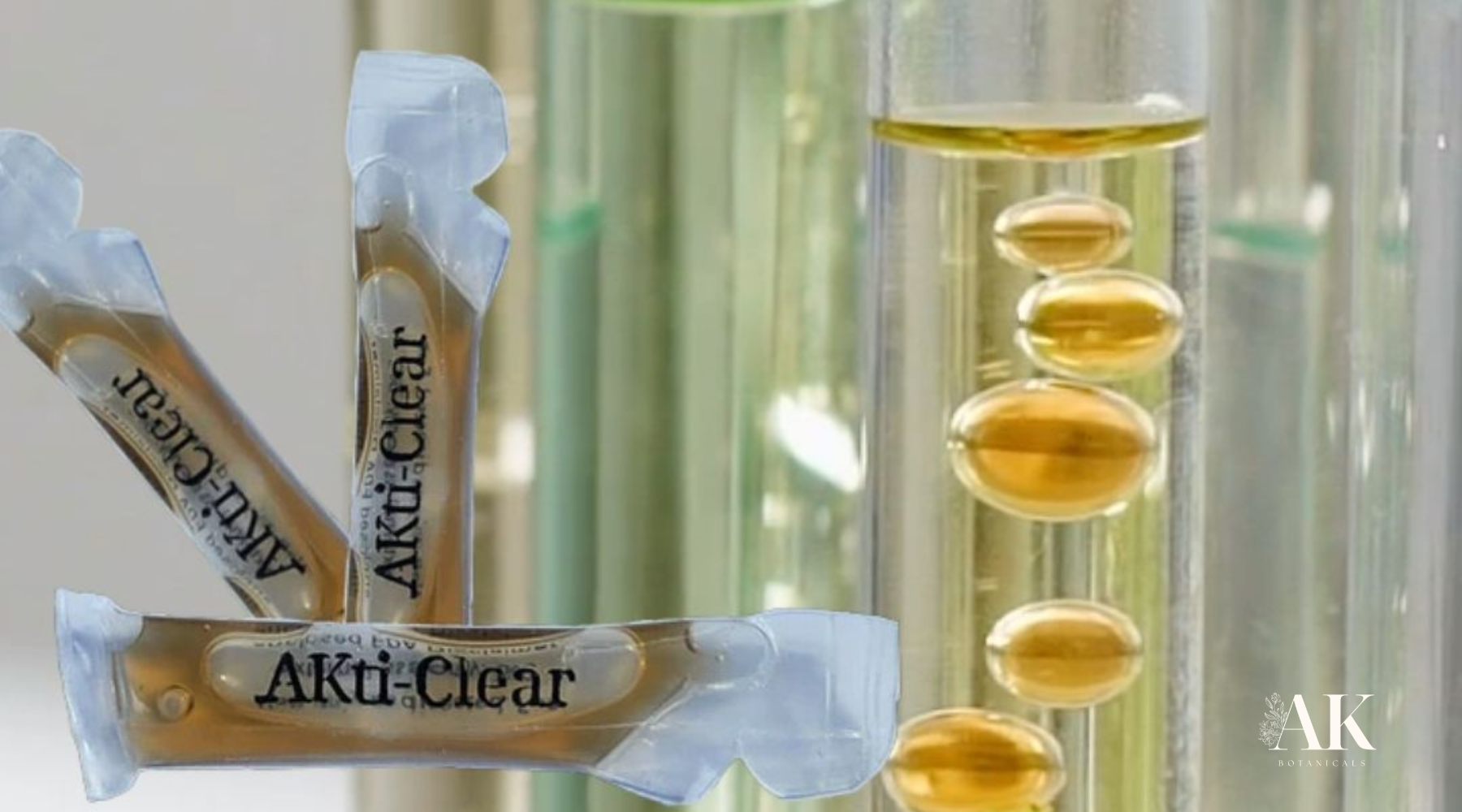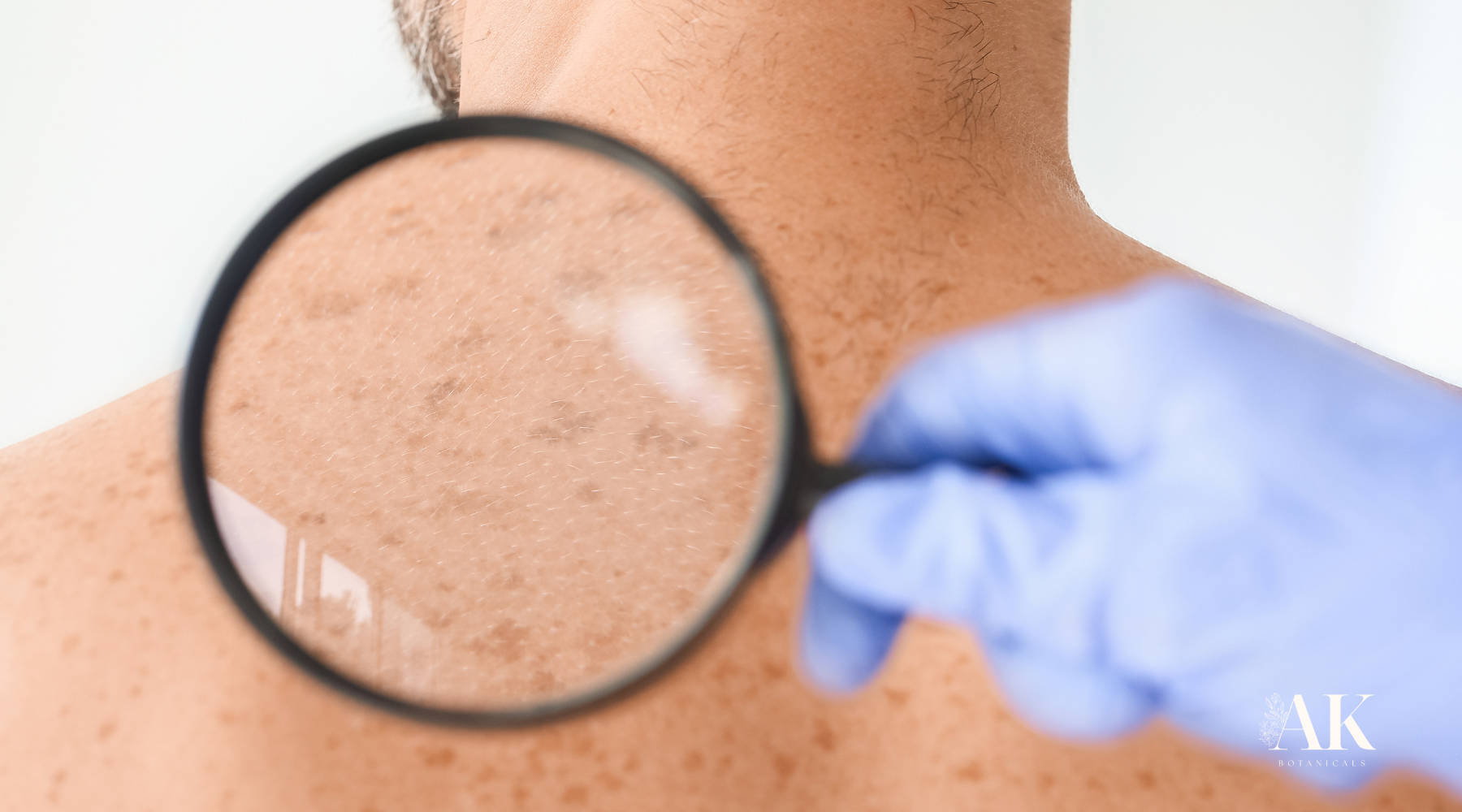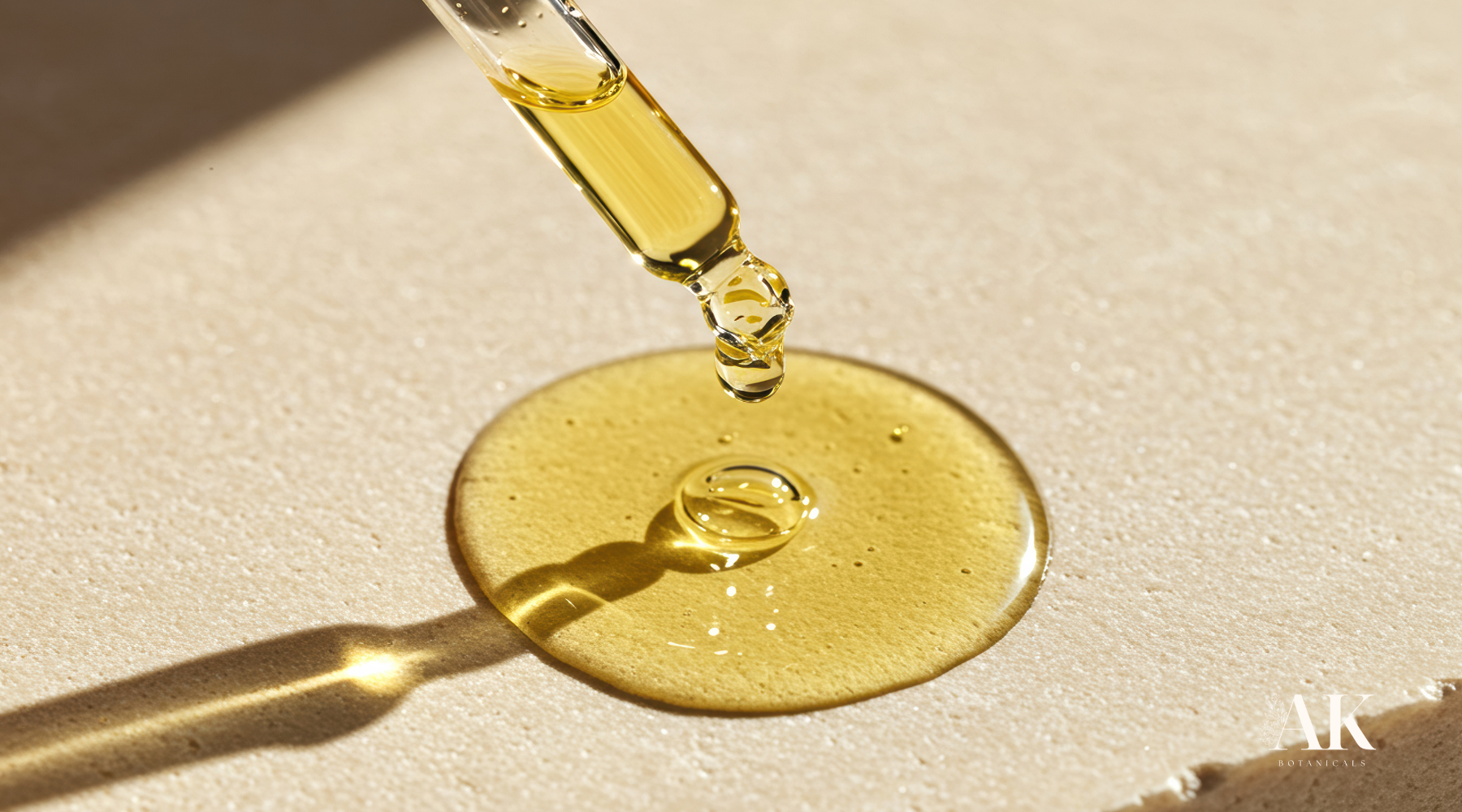
The Science Behind Actinic Keratosis Treatments: How AKti-Clear Supports The Skin
Science and Nature Together
Years of sun exposure leave visible marks. Rough patches. Scaly areas. Spots that do not fade. These changes often link to keratosis actinic, also known as actinic keratosis (AK). They signal that UV radiation has reached deeper than the surface.
Dermatologists offer many treatment modalities, but they can be invasive or uncomfortable. That is why people increasingly explore supportive skin care options that feel natural and practical. One of these is AKti-Clear™, our botanically infused topical created to support skin health after sun exposure.
What makes AKti-Clear unique is how it combines plant-based ingredients with a simple 3-step process. Research on its botanicals highlights antioxidant properties that support the skin’s natural resilience.
Natural Solutions and Supportive Skincare for AKs
People concerned about actinic keratoses often explore different options for care. Dermatologists remain the experts for medical treatment, but many people also look to natural solutions and skincare products that can support overall skin wellness.
Plant-based topicals, antioxidant-rich serums, and soothing formulations provide non-invasive ways to care for sun-exposed skin. These approaches can focus on addressing irritation, maintaining hydration, and helping the skin’s natural ability to renew. Unlike prescription drugs or physician-directed therapies, supportive skincare products do not require FDA approval because they are not classified as medication. Their role is to enhance daily skin wellness, not to act as a medical cure.
This is where AKti-Clear™ fits. It is not an FDA-approved keratosis treatment, nor is it intended to diagnose, treat, cure, or prevent diseases. Instead, it belongs in the category of dermatological skincare — created to provide support, backed by botanical research, and designed for people who want a natural option to complement professional care.
Traditional Options and Care for Treating Actinic Keratosis
Dermatologists use different treatment methods to address actinic keratosis. They aim to prevent progression of lesions that could, in some cases, develop into squamous cell forms of skin cancer. These include:
Cryotherapy (Freezing)
The dermatologist applies liquid nitrogen to freeze abnormal tissue. This is an effective treatment for isolated lesions. It works quickly but can sting, blister, or leave lighter or darker patches behind.
Photodynamic Therapy (PDT)
PDT applies a light-sensitizing chemical and then uses controlled light exposure. This topical photodynamic method treats multiple areas in a single session. It requires avoiding sunlight for several days afterward, which can be difficult.
Prescription Creams
Topical medication like 5-fluorouracil (5-FU), imiquimod, or diclofenac can reach both visible and hidden spots. Doctors often recommend this as a field treatment for widespread sun damage. These creams, however, usually cause redness and peeling that can last weeks. As a form of topical therapy, they remain a cornerstone in dermatology but are often associated with irritation that some patients find difficult to tolerate.
Chemical Peels or Laser Therapy
Chemical exfoliation or laser resurfacing removes superficial layers of sun-damaged skin. These methods improve texture but require downtime and careful aftercare.
Each treatment has clear benefits. At the same time, they often cause discomfort. In addition, many of these procedures carry a high cost and usually require multiple doctor visits, which can make long-term management challenging for patients.
Why Botanicals Attract Attention
Plants contain complex compounds that interact with human biology. Botanical ingredients are often accessible as part of everyday skincare, with products that are available without a prescription and generally at a lower cost than in-office procedures. Modern research explores how botanicals may support the skin in three main ways:
-
Encouraging the removal of damaged cells.
-
Antioxidant defense — neutralizing free radicals caused by UV exposure.
-
Anti-inflammatory action — calming irritation and redness.
Soursop (Annona muricata) and bloodroot (Sanguinaria canadensis) stand out in this research. These are also the key botanicals that form the foundation of AKti-Clear™, making its formula unique among supportive skincare products.
Ingredient Spotlight: Annona Muricata (Soursop)
Soursop, also known as graviola, grows in Central and South America. People have used its leaves, fruit, and seeds in traditional practices for centuries.
Research Findings
-
Extracts and annonacin, one of its acetogenins, showed cytotoxic activity against abnormal cell lines in lab studies.
-
Analysis of leaves identified 52 distinct phytochemicals with potential relevance for skin health.
-
Even fungi from soursop leaves displayed cytotoxic activity in vitro.
Soursop offers antioxidants such as vitamin C and flavonoids. These may help skin stressed by sun exposure, a factor that contributes to conditions like actinic keratoses and other cancer-related changes studied in dermatology research.
Ingredient Spotlight: Sanguinaria Canadensis (Bloodroot)
Bloodroot is native to North America. Native American communities used it for both ceremonial and topical purposes. Its main alkaloid, sanguinarine, has attracted modern research interest.
Research Findings
-
In vitro studies show sanguinarine may exert selective cytotoxic effects on abnormal cells.
-
Studies suggest it influences inflammatory pathways, reducing irritation.
-
Bloodroot extracts also demonstrate antimicrobial properties.
The combination of cytotoxic and anti-inflammatory qualities makes bloodroot an important botanical in supportive formulations.
How AKti-Clear Works: The 3-Step Application
AKti-Clear™ is a concentrated topical designed for precise application. It supports the skin’s natural renewal process after sun exposure.
-
Apply once daily for 3 days.
-
Keep the area clean, dry, and covered with a bandage.
-
Allow the eschar (scab) to fall away naturally.
This simple routine provides structure and consistency while the skin repairs.
The Science: Apoptosis and Eschar Formation
Apoptosis
Cells that are too damaged undergo apoptosis — programmed death. This process clears abnormal tissue without harming surrounding healthy cells. Research suggests compounds from soursop and bloodroot may encourage this process in vitro.
Eschar Formation
When abnormal cells detach, the skin may form an eschar. This temporary, dry crust protects underlying tissue. It falls away on its own once new skin covers the area.
Filling the Space
The skin responds with:
-
Granulation tissue — a collagen-rich base.
-
Re-epithelialization — new cells migrate to seal the surface.
-
Remodeling — the tissue strengthens and blends.
The body naturally fills and smooths the treated site.
Traditional Treatment vs. Supportive Care
**Supportive care is not a substitute and is for cosmetic purposes only.
|
Conventional Treatments |
Supportive Botanical Care |
|
Remove damaged tissue directly |
Support skin’s natural renewal |
|
Quick results but may cause pain |
Designed to be gentle |
|
Often physician-administered |
Can be applied at home |
Supportive botanical care does not replace medical treatment. It adds another layer to holistic skin care. While conventional topical therapy targets abnormal cells directly, botanically infused products like AKti-Clear focus on supporting natural repair in daily use.
Antioxidants and Inflammation in Skin Health
UV light creates reactive oxygen species (ROS). ROS damages DNA and accelerates aging. Antioxidants from botanicals like soursop neutralize ROS, reducing harm.
Inflammation is another driver of skin stress. Chronic low-grade inflammation worsens UV effects. Bloodroot compounds, including sanguinarine, may help regulate inflammatory signaling.
Sun Safety Still Matters
Even with botanicals, prevention remains essential:
-
Use broad-spectrum sunscreen daily.
-
Wear protective clothing and hats.
-
Avoid peak sun hours.
-
See a healthcare provider for annual exams.
These steps lower the risk of future AK and support long-term skin health.
Tradition Meets Science
In the Caribbean and Latin America, people brewed soursop leaves into teas and sometimes applied them to the skin. What was once traditional practice is now supported by modern studies exploring its phytochemical compounds.
Bloodroot followed a similar path. Native American tribes valued its potent red root, and today scientists investigate its main alkaloid, sanguinarine, in laboratory research.
By bringing these two botanicals together, AKti-Clear™ reflects a bridge between traditional wisdom and modern science.
The Future of Botanical Dermatology
Researchers continue to explore how plant compounds may work better in synergy, how new delivery systems like gels or liposomes can improve absorption, and how long-term safety can be ensured. AKti-Clear™ is part of this ongoing exploration, reflecting the potential of botanicals in supportive skincare.
Actinic keratosis is one of the most visible signals of UV stress on the skin. Dermatologists provide many treatment modalities to manage these concerns, but supportive care also has value.
Botanicals like soursop and bloodroot have been studied for their cytotoxic, antioxidant, and anti-inflammatory potential. AKti-Clear™ brings these ingredients together in a simple 3-step routine that supports skin health after sun exposure.
Supportive botanical care does not replace medical keratosis treatment. Instead, it complements professional care, offering a natural way to maintain skin wellness alongside dermatologist guidance.
Skin exposed to the sun needs care. Dermatologists provide effective treatment options, but supportive approaches add value.
By blending soursop and bloodroot in a simple, science-informed routine, AKti-Clear aligns with the body’s natural ability to renew. It is not a replacement for professional care, but it is part of a holistic vision where skin care reflects both tradition and modern science.
Important Disclaimer:
AKti-Clear™ is a dermatological skincare product formulated to support overall skin health. It is not a drug and not intended to diagnose, treat, cure, or prevent any disease, including actinic keratosis or any form of cancer. Scientific studies referenced relate to laboratory research on individual ingredients and do not represent product efficacy in humans. Always consult a qualified dermatologist for evaluation or treatment of any skin condition.




